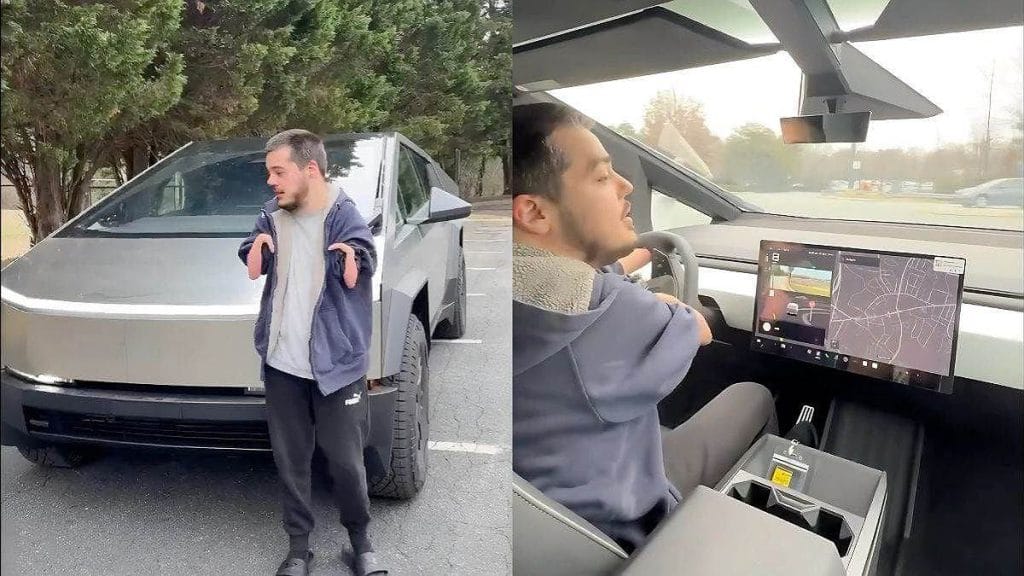The Tesla Cybertruck has been making waves in the automotive world, but what happens when a person without hands takes the wheel? Meet Martin, known as @real86hands on Instagram, who recently shared his experience driving the futuristic vehicle.
With over 1 million followers, Martin’s journey navigating the Cybertruck is an eye-opening story that offers both praise and constructive feedback for Tesla’s latest innovation.

A Challenge from the Start: Getting Inside
Martin’s first hurdle? Simply getting into the truck.
“The doors are freaking heavy,” he shared. Tesla’s Cybertruck is built like a tank, with ultra-durable stainless steel panels, but that also means its doors are significantly heavier than those of a typical vehicle.
For someone relying solely on their arms, this posed an unexpected challenge. However, Martin managed to get in and buckle up, ready for his test drive.
The Seat Controls: A Foot-Powered Solution
Once inside, Martin faced another common design quirk—the seat adjustment controls. Unlike some vehicles with controls on the door or dashboard, Tesla places them at the bottom side of the seat.
Martin, demonstrating his ingenuity, used his feet to scoot forward and position himself comfortably. While this isn’t an issue unique to Tesla, it’s something automakers might consider for accessibility improvements in future models.
Turn Signals and Gear Selector: A New Learning Curve
One of the biggest hurdles for Martin was Tesla’s unconventional control layout. The Cybertruck, like Tesla’s newer models, ditches the traditional turn signal stalks and gear shifter. Instead, turn signals are capacitive buttons on the yoke-style steering wheel, while the gear selector is a touchscreen swipe mechanism.
“For someone like me, it’s a bit tricky,” Martin admitted. “I even accidentally put it in reverse at one point when trying to drive forward.”
Tesla’s move away from physical controls has been met with mixed reactions. While some appreciate the minimalist approach, others find it difficult to adjust, especially those with disabilities or unique driving needs.
A Surprise Win: Steer-By-Wire System
Despite the challenges, Martin found one major highlight in the Cybertruck—its steer-by-wire system.
“The turning radius is so nice. The truck is fun and smooth to drive,” he said enthusiastically.
Unlike traditional steering systems, steer-by-wire eliminates the need for full rotations of the wheel. Instead, the Cybertruck can go from lock to lock in just 170 degrees, making maneuvering much easier. This was a game-changer for Martin, as it meant he could navigate with minimal movement.
A Bold Step, but Room for Improvement
Overall, Martin was impressed with the Cybertruck’s futuristic design and smooth driving experience. While he faced some accessibility challenges, he adapted quickly and found enjoyment behind the wheel.
“This is so much fun! It’s really smooth, too. The ride is quite smooth, and the steering wheel feels nice as well,” he concluded.
Martin’s experience sheds light on the importance of accessibility in automotive design. Tesla has always pushed boundaries, but his feedback shows that even revolutionary vehicles can benefit from more inclusive features. Perhaps, in the future, we’ll see Tesla making adjustments that cater to a wider range of drivers.
So, what do you think? Should Tesla rethink its control placements to improve accessibility? Let us know in the comments.
